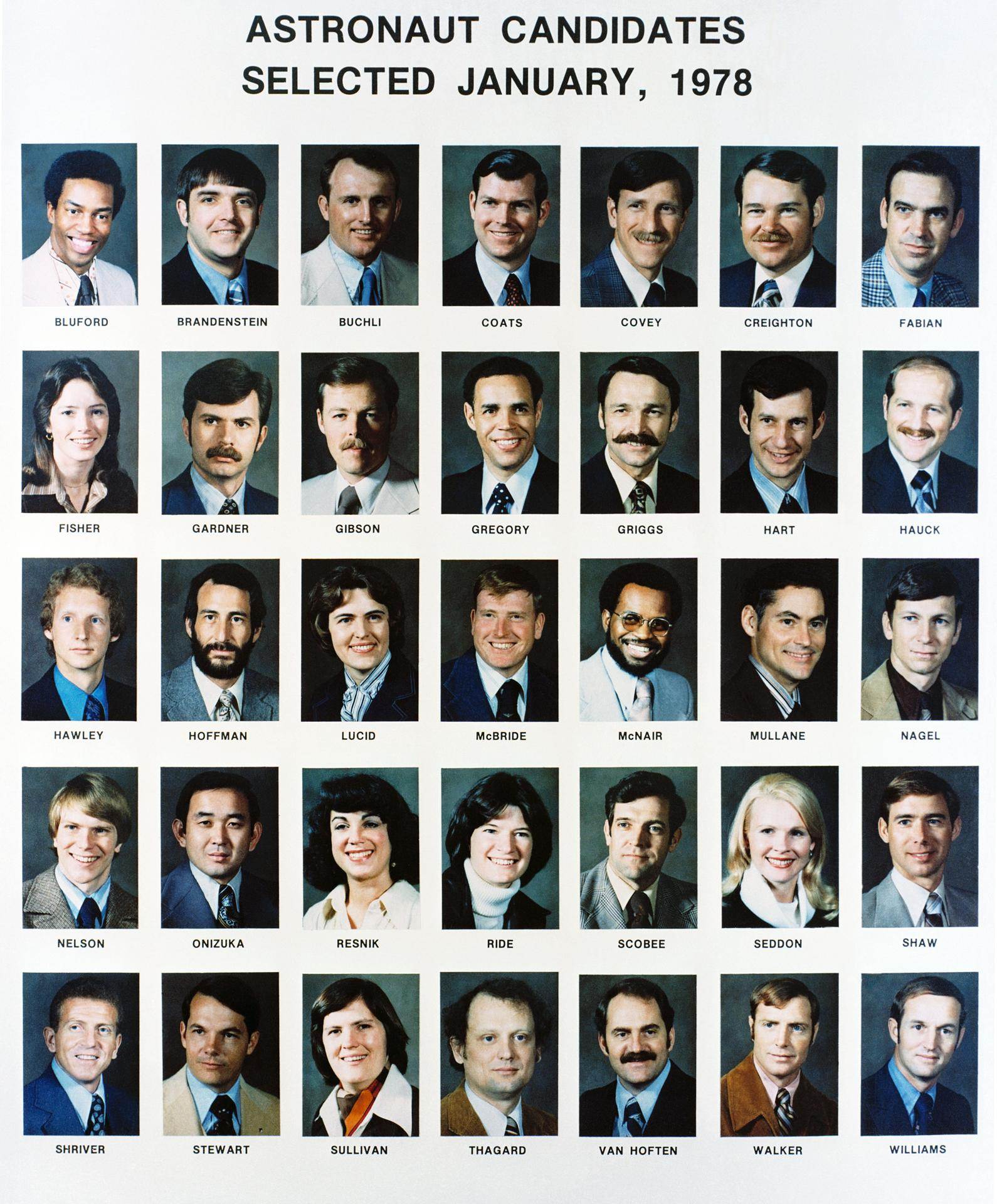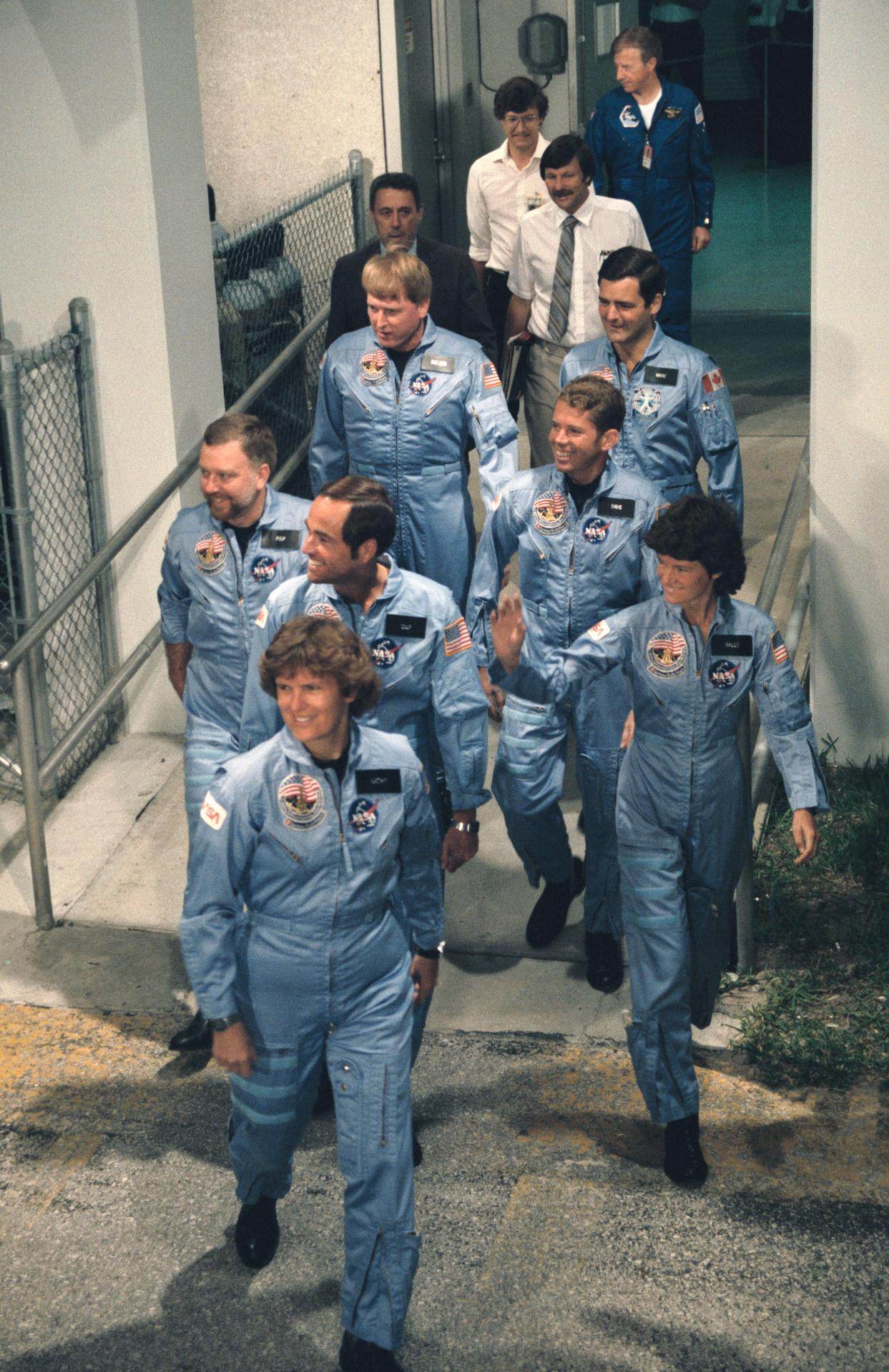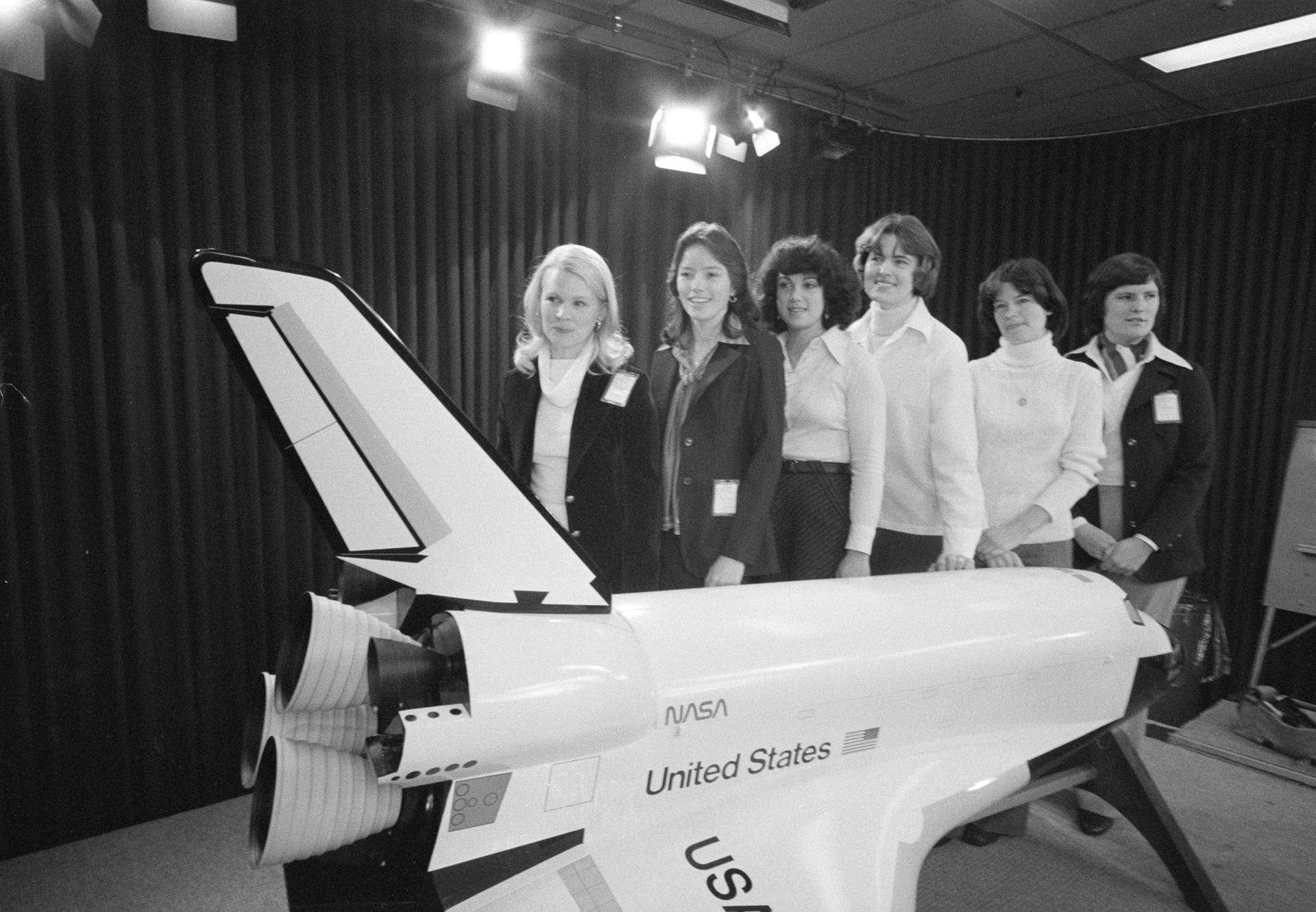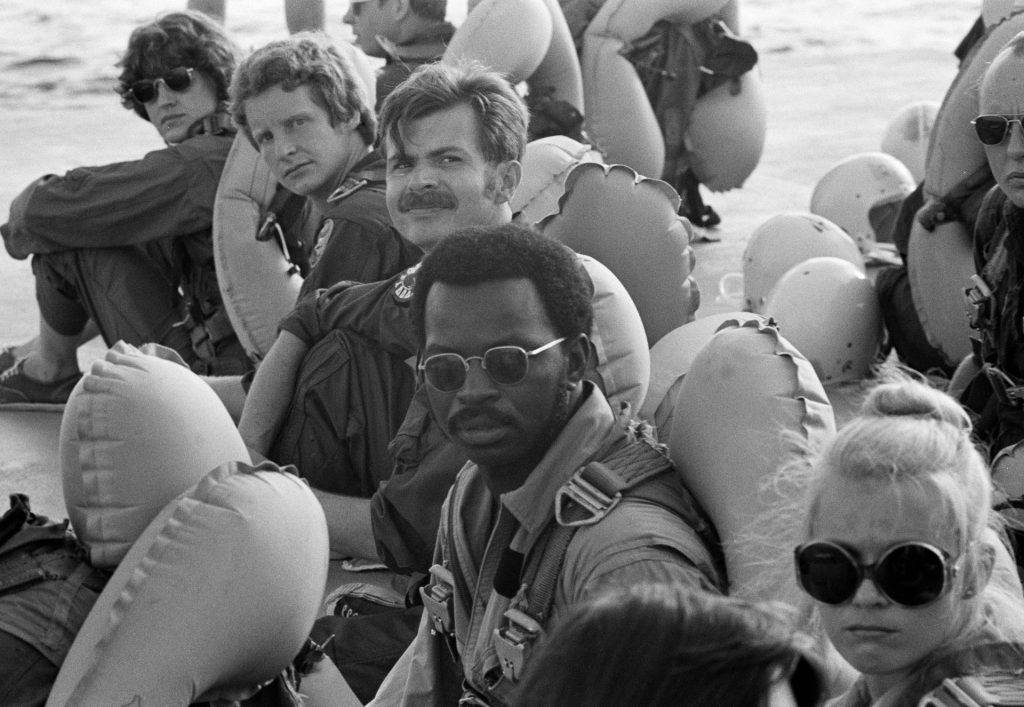This Space Available
By Emily Carney
Before you can make a dream come true, you must first have one. – Ronald McNair
The recently-released book The New Guys: The Historic Class of Astronauts That Broke Barriers and Changed the Face of Space Travel by Meredith Bagby focuses on the “main characters” of 1978’s Astronaut Class 8, christened “The Thirty-Five New Guys” or “The F—king New Guys” by their more senior colleagues. The TFNGs, the first dedicated group of Space Shuttle-bound astronauts, boasted NASA’s first women, African-American, and Asian-American astronauts; at the time, NASA’s Dryden (now Armstrong) Flight Research Center was being led by Isaac “Ike” Gillam, who was the first African-American center head in the agency’s history.
The NASA of 1978 bore little resemblance to the space agency of 1972, which according to The New Guys, comprised “only 5.2 percent” of minority employees, with women making up 16.2 percent. It was, in fact, “the worst government agency in terms of employment equality.” In contrast, the sausage fest that comprised the Atomic Energy Commission somehow had more sprinklings of minorities than the hallowed U.S. space agency that had brought humanity to the Moon.
The New Guys tells the story of NASA’s first “diverse” astronaut class from start to finish, arcing from their beginnings as youthful, wide-eyed applicants to seasoned Shuttle veterans watching the program’s final launch in 2011. But what spurred the creation of this group that better represented America, and why did it take NASA nearly 20 years to broaden the scope of its astronaut corps?
The answer is both simple and complex simultaneously. On the civil rights front, NASA’s abysmal record in affirmative action became newsworthy when Ruth Harris Bates, who led the agency’s Equal Employment Opportunity Office, was fired in 1973 simply due to sending a damning report underscoring NASA’s poor minority hiring practices. Accused of “divisiveness,” Harris was let go under the excuse of underperforming. When the press and civil rights groups became aware of this, their spirited protests led Congress to investigate her firing. While she eventually got her job back, there were still massive gaps in gender and racial equality – particularly in the most public-facing office, the Astronaut Office.
By late 1975, new qualifications were announced for future astronaut classes, but the bad press from Harris’ 1973 firing kept many qualified minority candidates from even bothering to apply. Enter iconic Star Trek actress and civil rights activist Nichelle “Lt. Uhura” Nichols and her “Woman in Motion” public relations campaign. Nichols’ dynamite personality inspired thousands, including future astronauts Fred Gregory and Ronald McNair, to apply to be a part of the “new style” NASA. According to space historian Margaret Weitekamp, Nichols’ approach with NASA was aggressive: “So, I said, if I take this on, and this becomes [real], I’ll be your worst nightmare…I intend to speak before Congress for this, and to all the newspapers and all the television [stations]…I’m going after PhDs in physics, chemical engineering…And these people, I will not insult by trying to convince them of something that is not possible.” Her clarion call, “This is your NASA,” seemed to reach beyond television screens and into the hearts of a new generation of men and women who yearned to go to space.

Another figure who vowed change would come to NASA had more unlikely origins, as he rose from the agency’s own bureaucracy. George Abbey, an enigmatic official who was hard to read at best and inscrutable at worst, personally promised that qualified candidates would be able to make it on his watch regardless of gender, religion, and race. This was due in part to him being passed over for the 1966 astronaut group because he wasn’t a test pilot, thanks to alpha male test pilot commandant Chuck Yeager; Yeager also infamously made it beyond difficult for Ed Dwight, a hopeful African-American astronaut during the early 1960s, to make it as a test pilot. (Yeager emerges as a Disney-style villain a few times in The New Guys.) While Abbey is not always a well-liked figure in NASA’s history, no one can dispute that his dedication to hiring a truly inclusive astronaut class was and continues to be a stroke of genius needed during the mid-1970s. In many ways, the presence of Abbey provides the fulcrum for the activities in The New Guys, as he also was in part responsible for synthesizing early Shuttle crews and missions.


Recently, Saudi Arabia announced its first inclusive “astronaut group,” half comprised of women. According to SpaceNews.com, “The Saudi Space Commission said Feb. 12 that Rayyanah Barnawi and Ali Alqarni will be part of the [Axiom Space]-2 mission to the ISS scheduled for launch no earlier than May on a SpaceX Crew Dragon spacecraft. …Barnawi and Alqarni will be the second and third Saudi citizens to go to space, after Sultan bin Salman Al Saud, who flew as a payload specialist on a space shuttle mission in 1985. Barnawi will be the first female Saudi astronaut.” Barnawi’s backup, Mariam Fardous, is also a woman.
Saudi Arabia’s human rights record has often been criticized, particularly its treatment of women. After Sultan bin Salman Al Saud flew aboard the Space Shuttle, TFNG astronaut Lucid, who had flown aboard his mission, had to be declared an “honorary man” to accept an invitation to visit Saudi Arabia’s king. A CNN article further discussed how Saudi Arabia is attempting to revise its narrative: “Saudi Arabia, which has been the subject of bad press for decades due to human rights violations, has embarked on an ambitious project to diversify the economy away from oil and shed its image as a conservative, closed-off state. ‘Back in the day, you would have negative discussions about Saudi Arabia affiliated to human rights abuses,’ said Andreas Krieg, research fellow at the King’s College London Institute of Middle Eastern Studies. ‘But now they’re trying to push new narratives of being a country of development and one that can build futuristic cities.’”
Can spaceflight help change Saudi Arabia’s national narrative? Time will tell. While the Soviet Union did fly the first woman into space, Valentina Tereshkova, in 1963, their space program waited nearly 20 years to follow through with its next woman cosmonaut in space – hardly a feminist victory. Let’s hope Saudi Arabia’s effort isn’t lip service. But to some extent, equality in spaceflight continues to transform the United States’ image as we await the first woman and person of color to take steps upon the lunar surface, hopefully later this decade. Whoever these historic figures will be, they’re forever indebted to “The New Guys.”
*****
Top photo credit: “Several new astronaut trainees are seen prior to a training exercise at the water survival school in Florida attended by 16 of the candidates. From far left to right are Shannon W. Lucid, Steven A. Hawley, Dale Gardner, Ronald E. McNair, and Rhea Seddon. The overall program, held at Homestead Air Force Base, was designed to prepare the trainees for proper measures to take in the event of ejection from an aircraft over water.” 1978 NASA photo.
A version of this article was published on Medium.
Emily Carney is a writer, space enthusiast, and creator of the This Space Available space blog, published since 2010. In January 2019, Emily’s This Space Available blog was incorporated into the National Space Society’s blog. The content of Emily’s blog can be accessed via the This Space Available blog category.
Note: The views expressed in This Space Available are those of the author and should not be considered as representing the positions or views of the National Space Society.



















